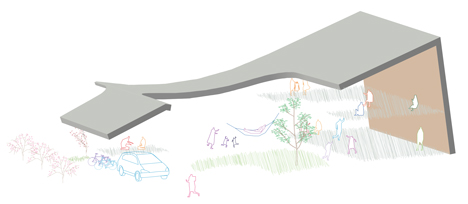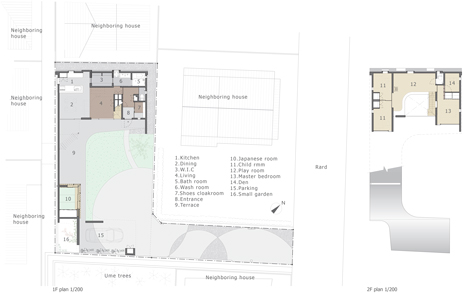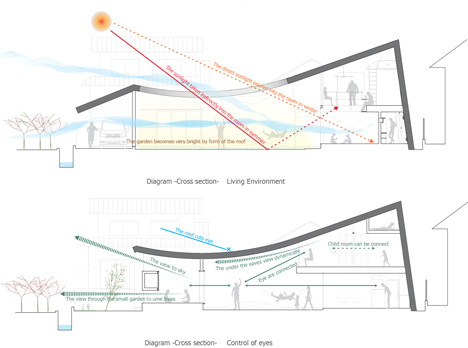Shawl House by Y+M Design Office has a roof that slopes down to shelter a tea room and terrace
The roof of this Japanese home by Y+M Design Office has been designed to hang like a shawl, drooping over the house to cover a terrace, tea room and carport (+ slideshow).

Shawl House was designed by Kobe-based Y+M Design Office for a couple with two young children in the southern Japanese city of Imabari, who previously lived in a cramped home with little natural light. It comprises a two-storey house, a separate tea room and terrace, and a carport.
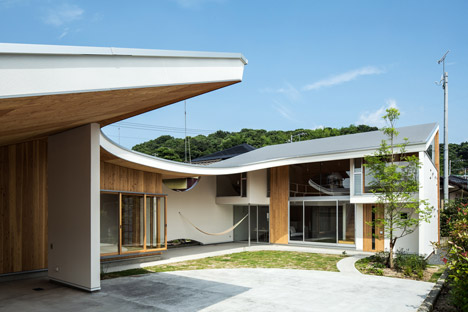
As the house is surrounded by others on all sides, the architects arranged its three volumes in a C shape around a garden to create a sense of enclosure, and covered them in a single roof to shield them from overlooking.
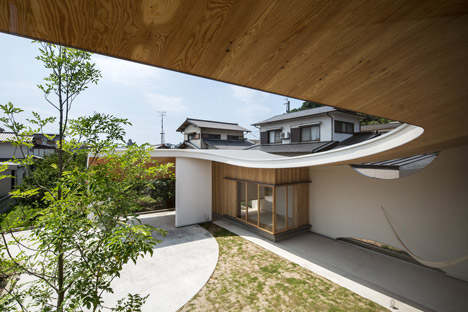
"The owners wanted a bright house where they could live easily with two children," architect Hidemasa Yoshimoto told Dezeen. "We designed the roof like a soft shawl, which gently covers the building to maintain their privacy."
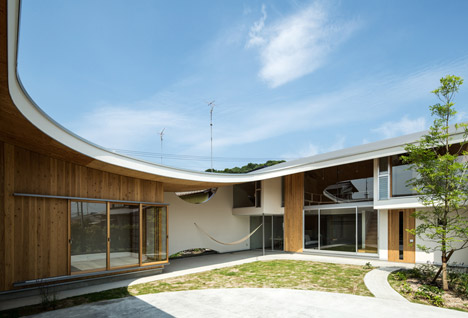
The extended roof was also designed to provide shade for the house in summer, when temperatures reach about 27 degrees Celsius (80.6 degrees Fahrenheit), and trap warmth in winter, when temperatures drop to about five degrees Celsius (41 degrees Fahrenheit).
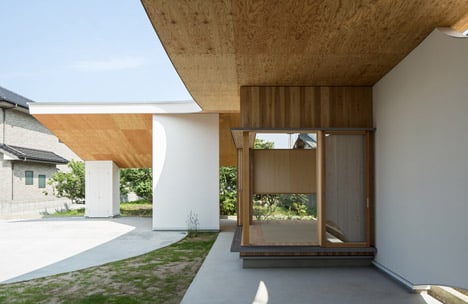
"In summer, the shawl roof cuts out strong sunshine and traps cool air, and in winter, it traps the sunshine, and the warmth from this gets stored naturally in the terrace's concrete floor," said Yoshimoto.
Two curved slits have been cut out of the wall behind the terrace to allow breezes to pass through the site, providing natural ventilation in summer.
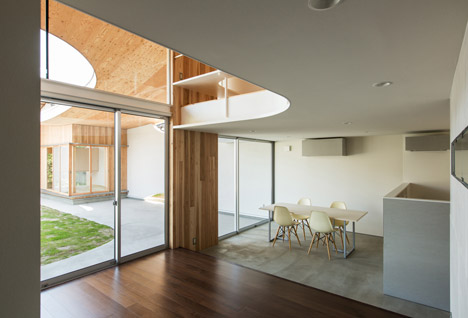
The ground floor of the house has an open-plan kitchen, dining room and living space, and the first floor has a master bedroom and study, two children's bedrooms, and a play area at the top of the stairs.
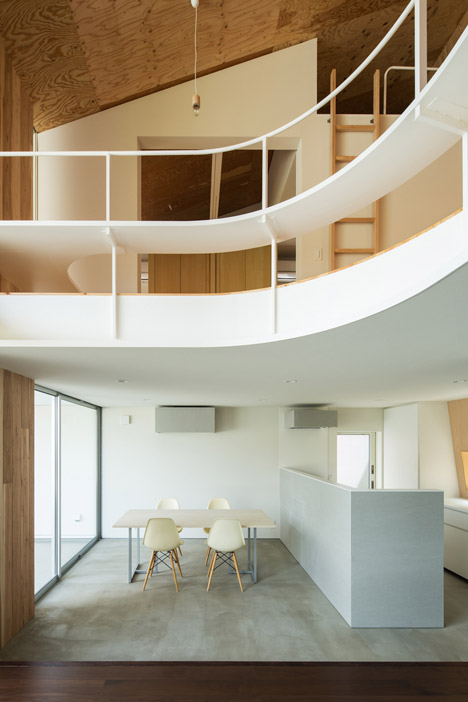
A curved section of the upper floor has been cut out to create a void between the play area and the living space below.
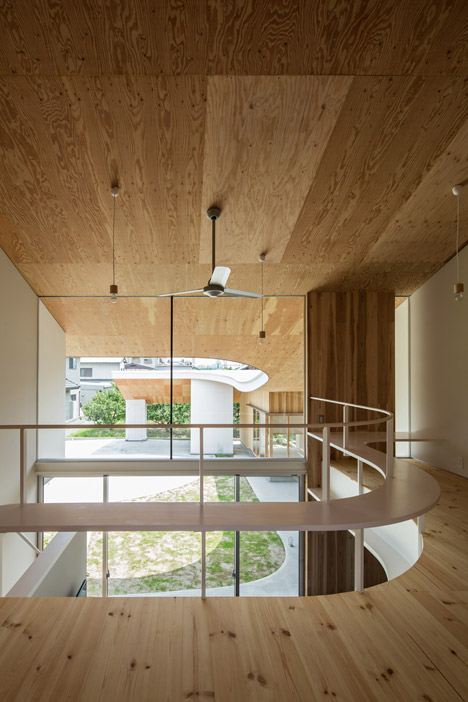
"It means the family can easily have eye contact with each other and communicate, which makes for a better life together under one roof," said Yoshimoto, whose firm has also recently completed a residence designed as a house within a house and a home of at the foot of Mount Rokkō featuring a series of stacked concrete boxes.
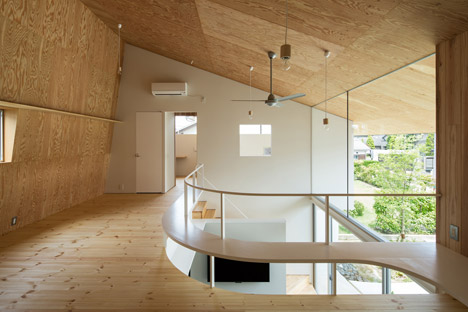
The curved void inside Shawl House follows the line of the roof outside to create a sense of continuity between the interior and exterior, and plywood covers the ceiling inside and outside to accentuate this.
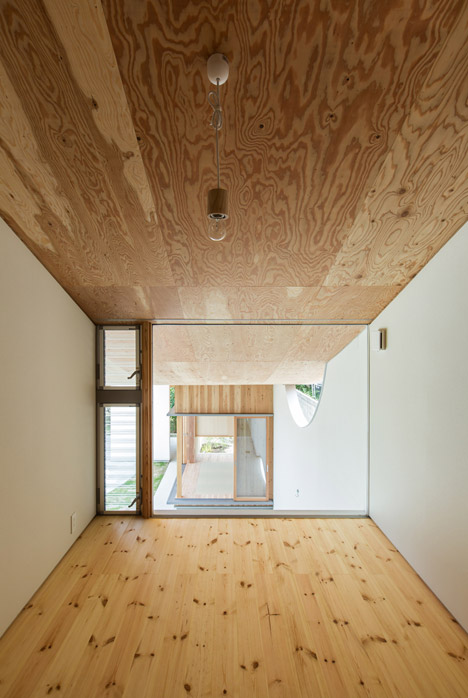
"The owners wanted a space that was light and private, but the connection between indoors and outdoors was also important for them," said Yoshimoto.
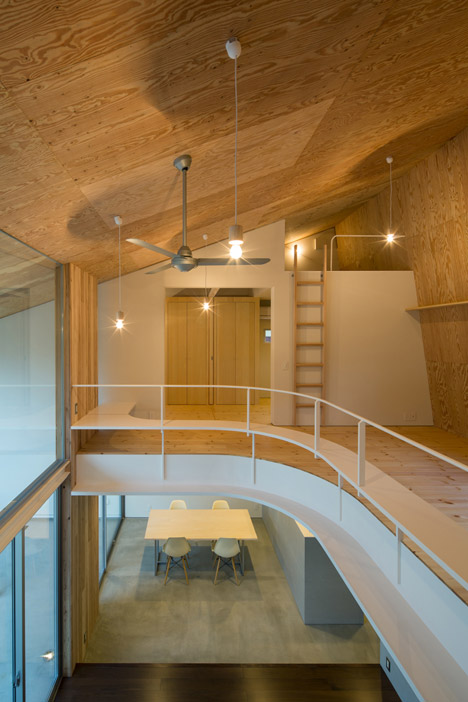
"It provides a good sense of openness and broadness, and makes the house feel bigger than it really is," he added.
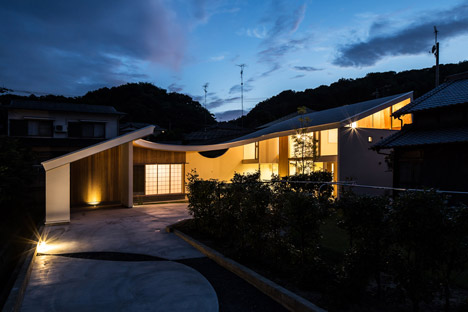
Shawl House was built with a timber frame, while the roof was built with a steel frame covered in timber. Construction was completed in nine months.
Photography is by Yohei Sasakura/Sasa No Kurasha.
